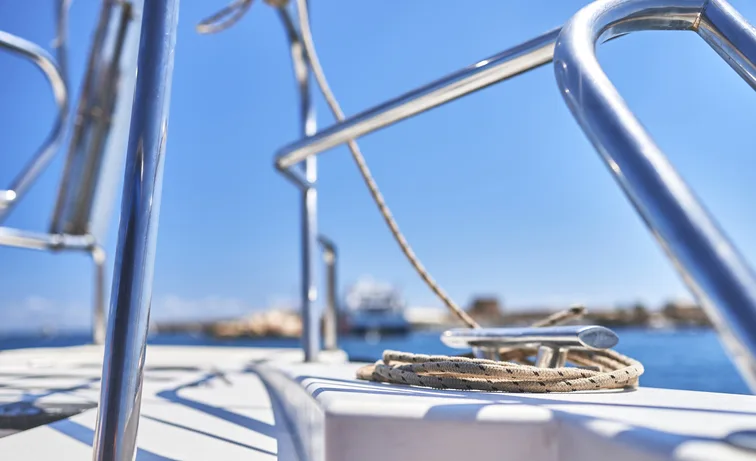
The International Convention for the Safety of Life at Sea (SOLAS) is one of the most important international treaties governing maritime safety. It sets global standards for the construction, equipment, and operation of ships.
But, in our experience, serious accidents at sea almost always occur when companies disregard these rules, cut corners, and put profits ahead of people. Tragically, offshore workers, crew members, and passengers are the ones who suffer lasting or even permanent injuries. When that happens, you have the right to hold the reckless corporation fully accountable — and you should.
At Zehl & Associates, our undefeated maritime injury lawyers have won Billions, including the largest verdicts and settlements for maritime accident cases. We take on negligent companies to ensure injured workers receive the full compensation and justice they deserve — and we don’t just win, we set records.
Understanding SOLAS is crucial for maritime professionals and anyone affected by maritime accidents, including cruise ship passengers, crew members, and offshore workers. Here is what you should know.
The Origin and Purpose of SOLAS
The first version of SOLAS was adopted in 1914 following the tragic sinking of the Titanic, in which over 1,500 people lost their lives. That disaster exposed issues with ship safety, such as inadequate lifeboats and poor emergency procedures.
SOLAS has evolved since then through several updates to address new challenges in maritime safety. The 1974 Convention, as amended, is the current version in force today. It is administered by the International Maritime Organization (IMO), a United Nations agency that oversees international shipping regulations.
The goal of SOLAS is to ensure ships are built, equipped, and operated in ways that protect human life at sea.
Key Areas Covered by SOLAS
SOLAS contains 14 chapters, each focusing on specific aspects of maritime safety. Some of the most important include:
- Chapter II-1 – Construction: Establishes design and stability standards for ships to prevent flooding and ensure seaworthiness.
- Chapter II-2 – Fire Protection: Sets out fire safety measures, including fire detection systems, escape routes, and firefighting equipment.
- Chapter III – Life-Saving Appliances and Arrangements: Requires lifeboats, life rafts, and survival gear for all passengers and crew.
- Chapter IV – Radiocommunications: Mandates distress communication systems, including Global Maritime Distress and Safety System (GMDSS) equipment.
- Chapter V – Safety of Navigation: Requires ships to carry navigational charts, maintain lookout duties, and operate safely in all conditions.
- Chapter IX – Management for the Safe Operation of Ships: Introduced the International Safety Management (ISM) Code, which ensures companies follow structured safety protocols.
These chapters are focused on ensuring that vessels worldwide adhere to consistent safety standards no matter where they operate.
Who Must Comply With SOLAS?
SOLAS applies primarily to commercial vessels on international voyages. This includes cargo ships, tankers, and passenger ships. However, some provisions can influence domestic operations as well, especially in coastal or offshore activities on U.S. waters.
In the United States, the U.S. Coast Guard enforces SOLAS standards for foreign-flagged ships entering American ports. Additionally, vessels registered in the U.S. must comply with SOLAS through domestic regulations.
SOLAS and Cruise Ship Safety
SOLAS provides a critical safety net for passengers traveling on cruise ships. It governs everything from lifeboat drills to fire suppression systems and emergency communications. Cruise ship accidents often reveal how vital these international standards are.
Common accidents include onboard fires, groundings, or mechanical failures. Cruise operators who fail to follow SOLAS requirements can be held liable for negligence if passengers or crew are injured as a result.
Why SOLAS Matters for Offshore Workers and Texas Residents
Texas is home to major ports like Houston, Galveston, and Corpus Christi, and serves as a hub for offshore oil and gas activity in the Gulf of Mexico. Many offshore workers, seafarers, and longshoremen depend on SOLAS-compliant vessels and safety systems.
Serious maritime accidents can occur when a ship fails to meet SOLAS standards. Potential accidents include:
- Fires and explosions
- Vessel sinkings or capsizing
- Equipment malfunctions
- Lifeboat or evacuation failures
If you suffer maritime or offshore injuries, an experienced Houston maritime lawyer can help. A lawyer can evaluate whether SOLAS violations contributed to your injuries and pursue the responsible parties for damages.
A Texas Personal Injury Attorney Can Help: 1-888-603-3636 for a Free Consultation
Understanding SOLAS is not just about international regulations. It is about protecting the lives of those who work and travel on the water every day. Compliance with SOLAS standards can mean the difference between safety and tragedy in the Gulf of Mexico and beyond.
By holding negligent parties accountable, injured workers help promote safer maritime practices for everyone on Texas waters. If you need help, contact Zehl & Associates today to schedule a free consultation with a member of our Undefeated team.
Call 1-866-773-0092 or send us a confidential email via our Contact Us page.
All consultations are free, and you won’t pay us anything unless we win your case.
We proudly serve Harris County, Midland County, and throughout the state of Texas. We are located in Houston and Midland and throughout the state of Texas:
Zehl & Associates Injury & Accident Lawyers – Houston
2700 Post Oak Blvd #1000, Houston, TX 77056
(888) 603-3636
Open 24 hours

Zehl & Associates Injury & Accident Lawyers – Midland
306 W Wall St Suite 701, Midland, TX 79701
(432) 220-0000
Open 24 hours